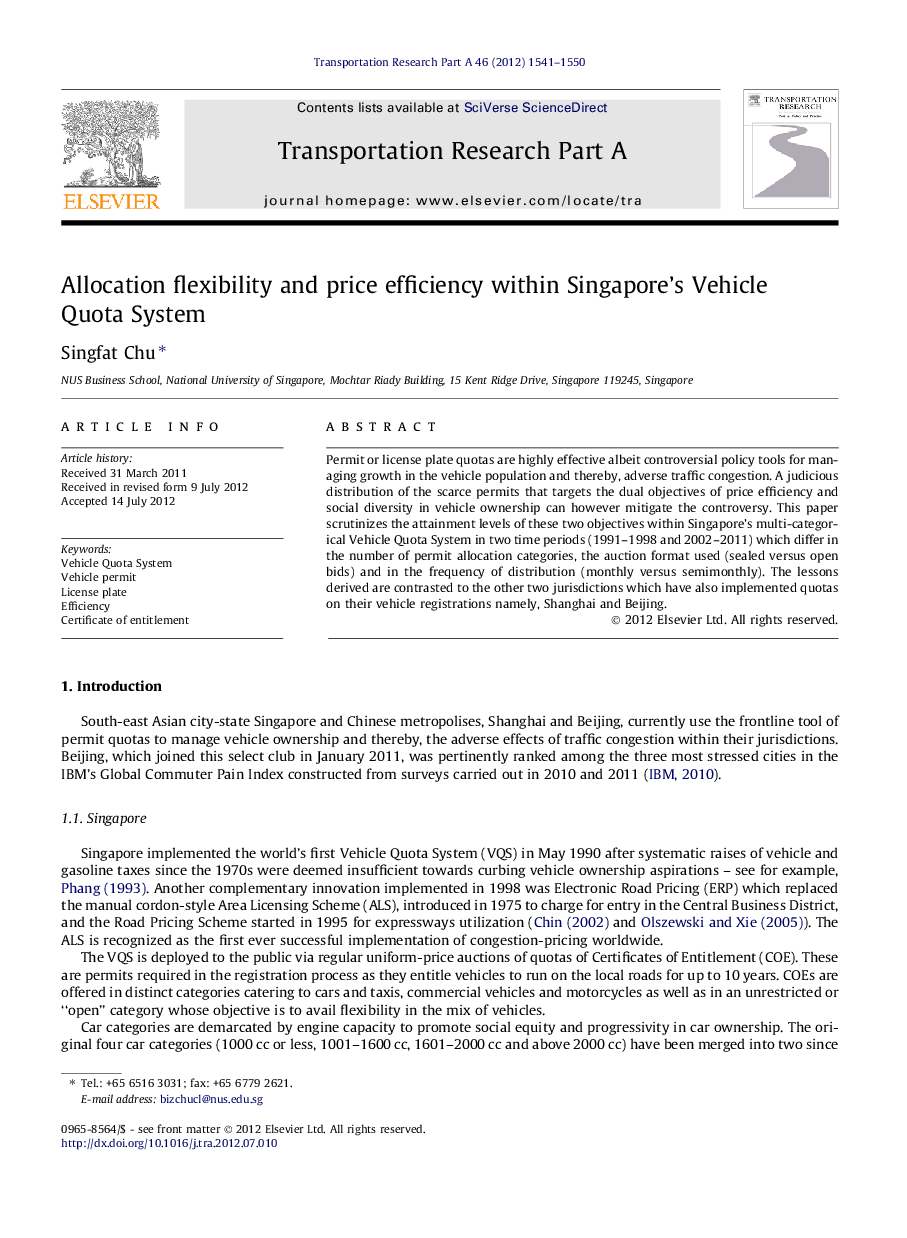| Article ID | Journal | Published Year | Pages | File Type |
|---|---|---|---|---|
| 311555 | Transportation Research Part A: Policy and Practice | 2012 | 10 Pages |
Permit or license plate quotas are highly effective albeit controversial policy tools for managing growth in the vehicle population and thereby, adverse traffic congestion. A judicious distribution of the scarce permits that targets the dual objectives of price efficiency and social diversity in vehicle ownership can however mitigate the controversy. This paper scrutinizes the attainment levels of these two objectives within Singapore’s multi-categorical Vehicle Quota System in two time periods (1991–1998 and 2002–2011) which differ in the number of permit allocation categories, the auction format used (sealed versus open bids) and in the frequency of distribution (monthly versus semimonthly). The lessons derived are contrasted to the other two jurisdictions which have also implemented quotas on their vehicle registrations namely, Shanghai and Beijing.
► The Vehicle Quota System (VQS) in Singapore debuted in 1990. ► Price efficiency and diversity in car ownership are assessed over 21 years of the VQS. ► Their high attainment levels are attributed to several VQS design characteristics. ► Beijing and Shanghai, which also ration vehicle permits, can benefit from the findings.
